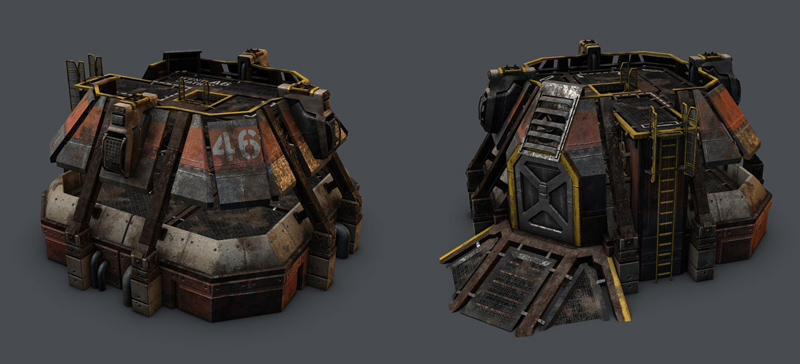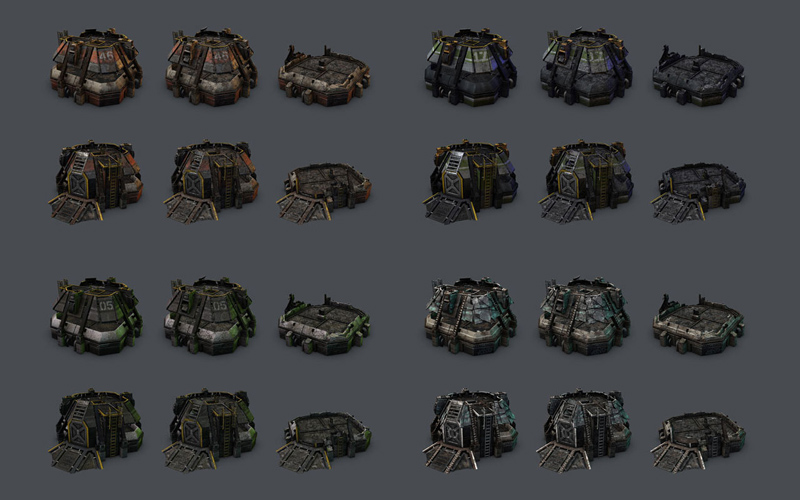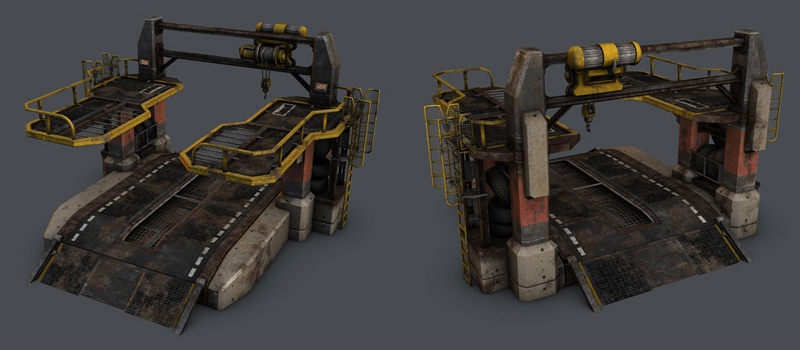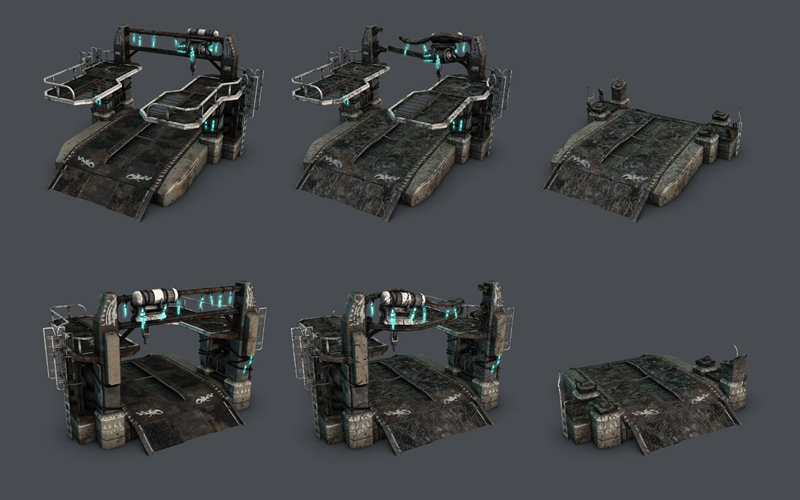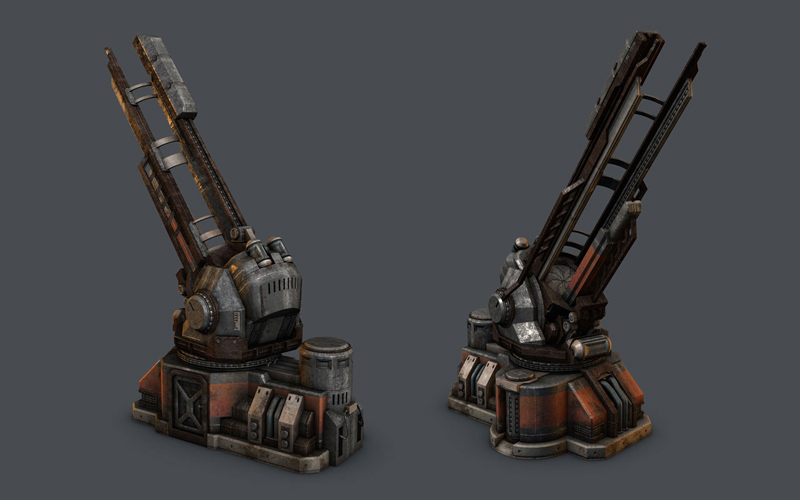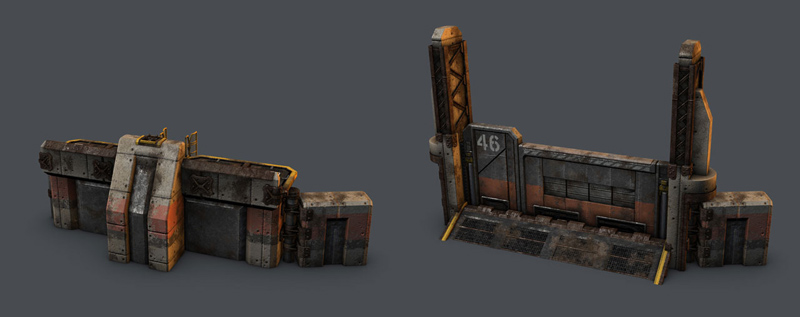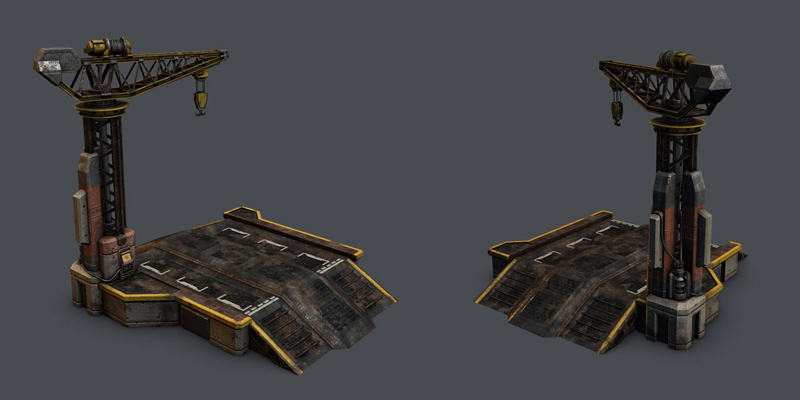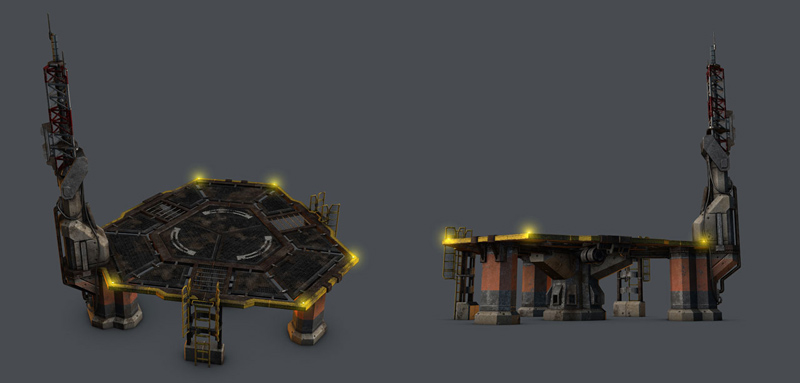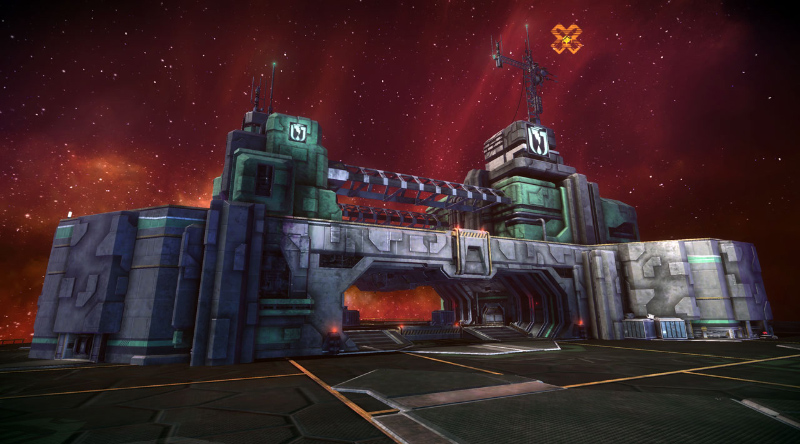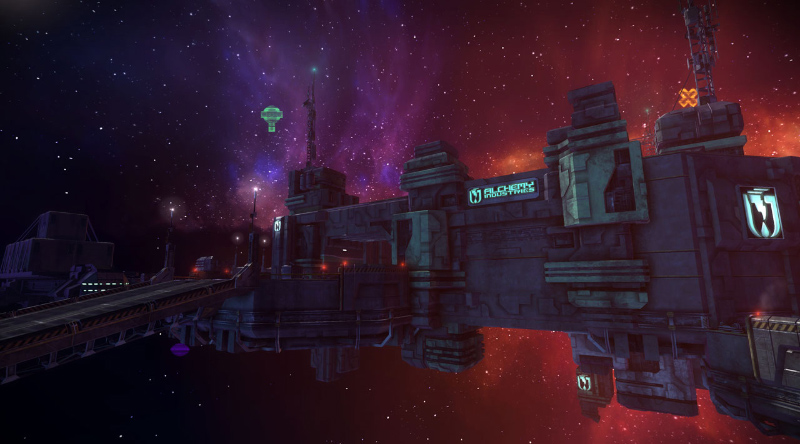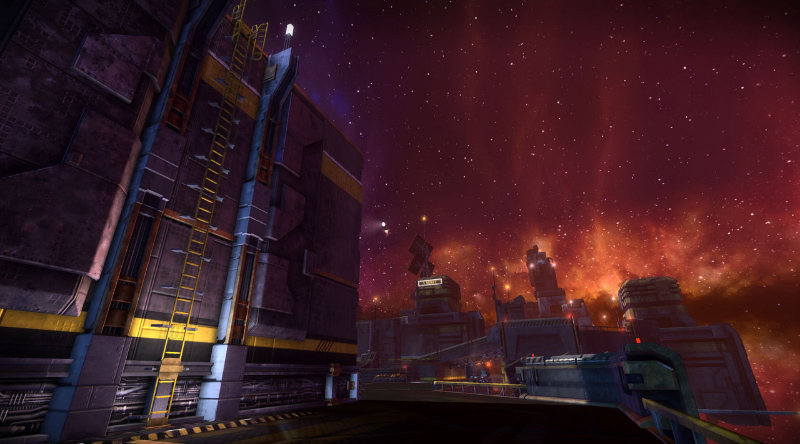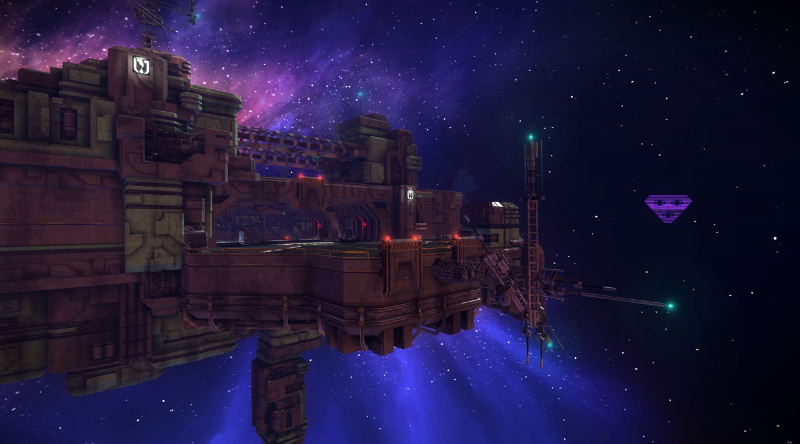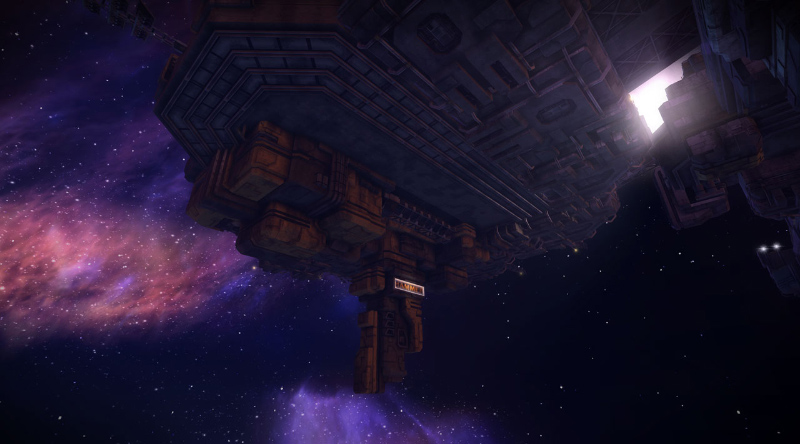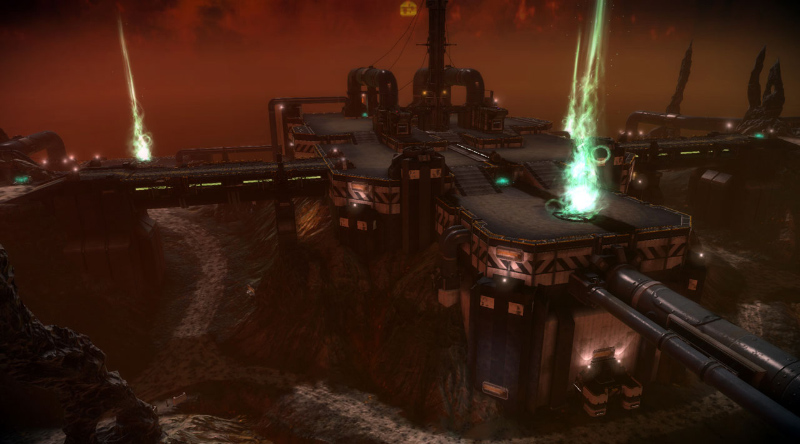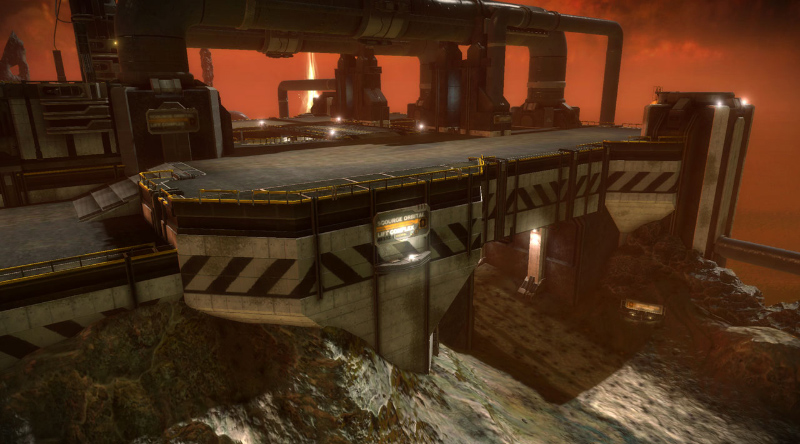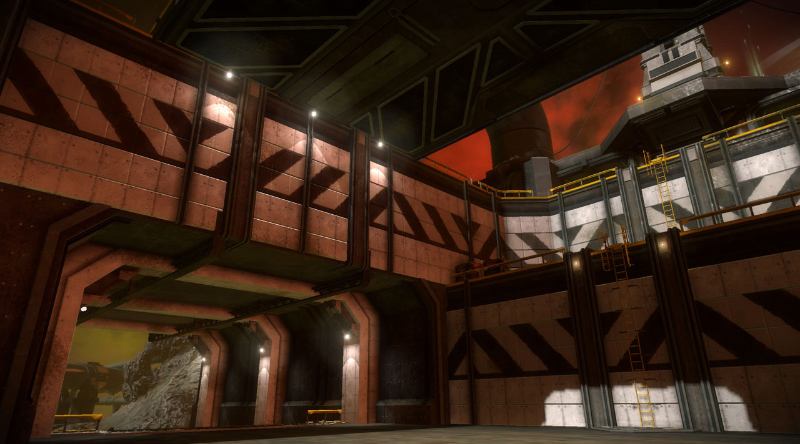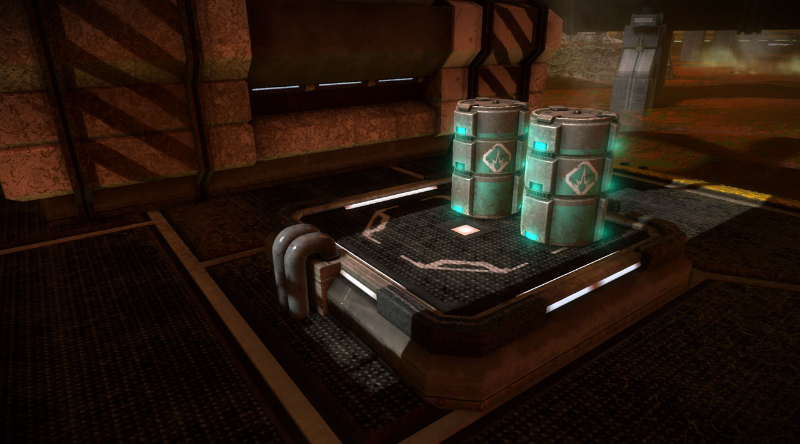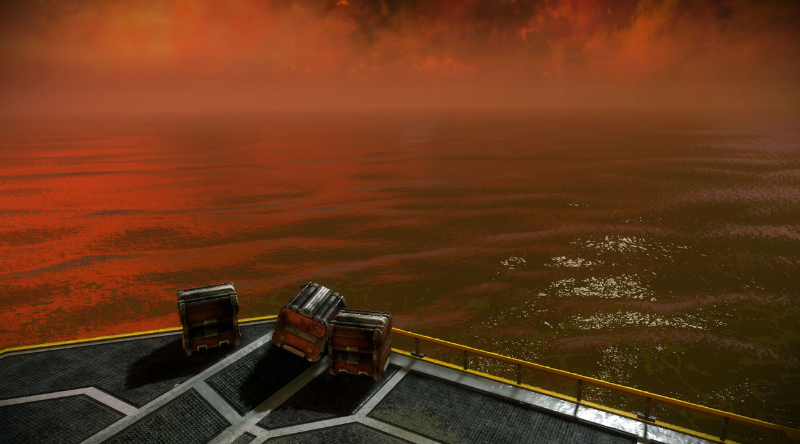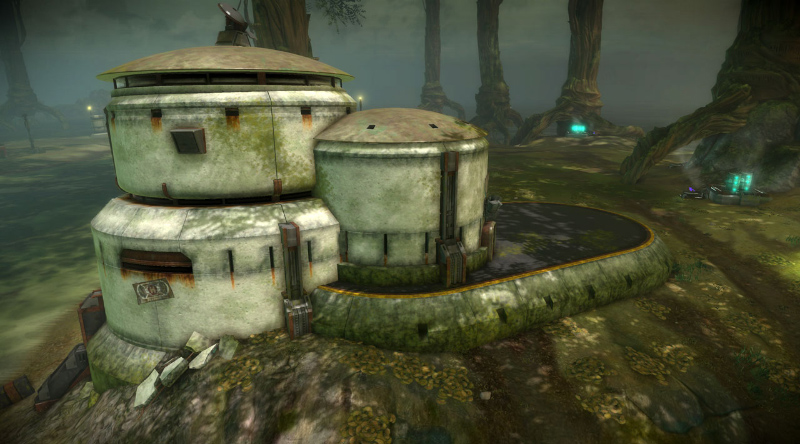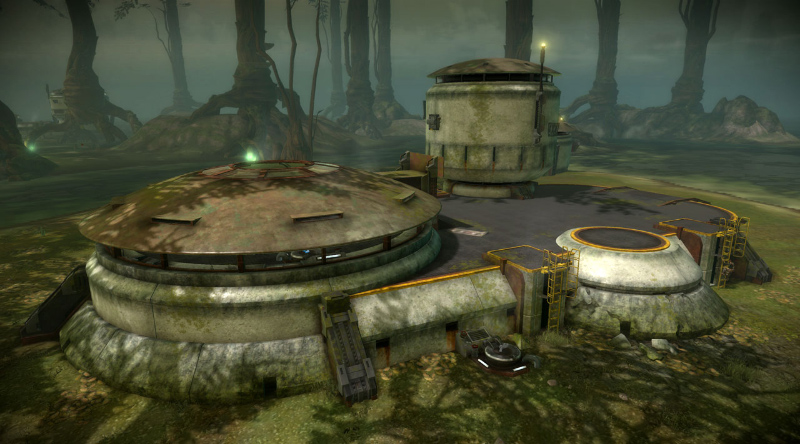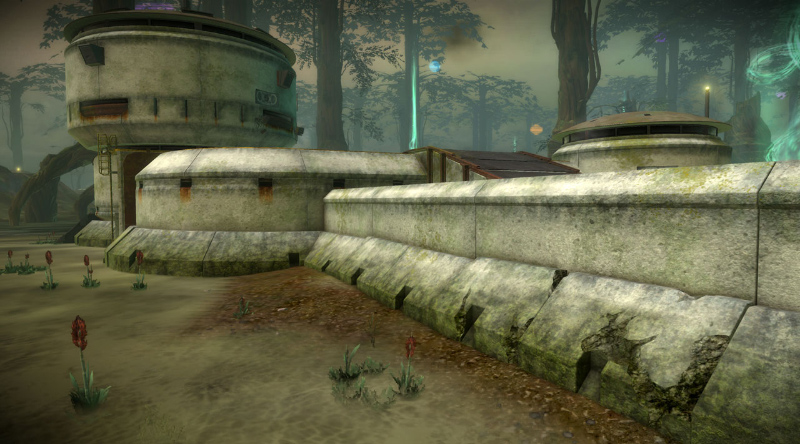Creation of the Build and Battle parts involved developing a very "repurposed and functional" style and form language for the Rifter team's buildings, as well as the "tribalized" variant of each one for the Outcast team. Each one had to contribute meaningfully to the level's playable space and remain highly identifiable at long distance; support several stages of destruction (hand-made), several tiers of LOD (also hand-made), and team-specific dressing within a branching heirarchy; be built entirely with one pack of reusable tiling atlas textures, for memory purposes; and visually accomodate swapping in very different atlas packs on a per-environment basis.
I also covered a fair deal of static world props, focusing on architecture. When work on levels in the Space Platform theme stalled due to stale assets, I was tasked with coming up with a system of geometry and texturing that was adaptable enough to refresh all the existing space platform buildings while only sipping at the memory budget. I came up with a slim but robust suite of materials and a codified form language for their use that other artists could quickly pick up on to bring the Space theme back to the forefront of production. When it was decided the bare metal buildings needed a coat of paint, I took the opportunity to push for a solution at the shader level that would simultaneously solve another problem we were facing with team colorization on the B&B parts, solving two problems at once.
Responsible for modeling/texturing of most Space architectural props, seen here and used across all Space themed levels.
Creation of the Acid Sea environment had been focused on the visual story of its metallic geology, but this left larger maps in the theme feeling monotonous long after we'd run out of memory for architectural "foundation" pieces to break up the outdoor terrain on the scale we'd need. Using only materials that would already be loaded, I created an efficient set of modular, grid-tight retaining walls to allow wholesale assembly of new foundations within the level editor. This allowed us to express the designers' environments as much with masonry as with rock and dirt.
After we shipped, we targeted a new Swamp Lab environment theme for DLC1 with the goal of rolling it out in record time. While the other artists cranked out the trees and terrain, I assembled the new Swamp-specific material pack and built out a more futuristically curvy set of foundation segments, domes, and walls. Each wall followed a profile I developed that created four different architectural silhouettes when turned front to back or upside down while still interoperating seamlessly. The strict ownership of shaders by the graphics programmers was also relaxed (since they had moved on to New Things), and I was finally able to take advantage of vertex blends to add much-needed groundedness and unique geometry-specific filth and wear to the environment props, something our previous tiling-material-only buildings lacked, without significant texture memory expense.
